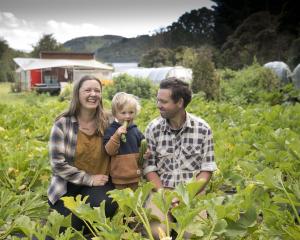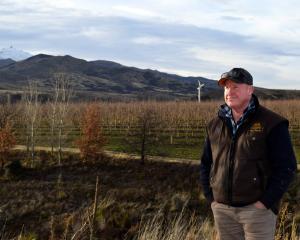
New Zealand-owned and operated company Tāmata Hauhā fronts the initial cost to plant exotic and native trees to generate carbon credits through the Emissions Trading Scheme, and then sells the credits and shares the returns with the landowner.
Clients include the more than 2500ha sheep and beef breeding and finishing operation The Wandle near Middlemarch, which ranges from the Taieri River to the Rock and Pillar Range.
Tāmata Hauhā tree plantings on The Wandle comprise 24ha pine, 4.4ha poplar and 27ha riparian pin oaks.
The pin oaks were planted last year and native vegetation will be underplanted in 2026.
The Wandle co-manager Tara Dwyer said the plantings were a result of critically analysing the property’s land classes and identifying areas unsuitable for running livestock and then searching for alternative ways to make money from them.
Co-manager Angus Barr said trees were planted on "hard and tough" areas of The Wandle.
"It is not a huge loss to the system. Our vision is to have a green corridor from the river to the hill and we are using Tāmata Hauhā as a vehicle to do that," he said.
Tāmata Hauhā co-founder and chief executive Blair Jamieson, of Orewa, said it was exciting to have formed a partnership with The Wandle.
Tāmata Hauhā was the largest planter of non-pine tree species in New Zealand, Mr Jamieson said.
"You can make more money with exotic hardwoods, combined with natives, than you can with radiata. It just comes down to understanding the rules of the ETS."
To enter forestry in the scheme, tree species need at least 30% canopy cover.
Under the rules, a forest could be established by planting between 50 to 60 stems per hectare.
Other activities were allowed under the canopy, he said.
By planting a mix of exotic hardwood and native trees, a landowner achieved up to six times more revenue than planting only native trees.
A mix of exotics and natives allowed landowners to earn up to $1600 per hectare, Mr Jamieson said.
"We pay for everything, the preparation, the seedling, the ongoing management, the insurance and at that point we share half the carbon. The cost of capital is mine, I carry that risk and investment."
Tāmata Hauhā had planted nearly 50 tree species in New Zealand this year.
Pin oaks were planted on The Wandle because the species could tolerate the cold.
He praised The Wandle owners and management for their courage to be "the first cabs off the rank" in their region.
Both parties would share carbon credits for 16 years and then all of the carbon credits would be the landowner’s.
Four farms had avoided going into receivership this year as a result of landowners launching partnerships with Tāmata Hauhā, Mr Jamieson said.
Tāmata Hauhā asked bankers what was needed to stop a receivership and then provided them confidence by "designing something they are happy with".















